It's a good thing for this album that Ellen Allien is in control of what gets released on the Bpitch Control label, had anyone else submitted this snooze-fest as a demo it undoubtedly would be rejected. Were Berlinette not in my personal top five or so faves of electronica albums of the last decade I probably wouldn't be so harsh, but Dust truly is a stinker.
Objectively Dust suffers from an identity crisis. It's an album molded to the pop format: 10 songs that average about 4.5 minutes each, but stylistically it's attempting to be a collection of music for the dancefloor: faithful beats with very little instrumentation and vocals. Subjectively Dust is plagued by compositions that are weak, bland, uninspiring, and forgettable. There's no hooks here: nothing to hold on to, and while that may work with the most minimal melodies, the tunes here are simply amateurish and dull: the album consists entirely of filler.
Preceding Allien's fifth solo full-length album are a couple singles.
- Administrator
- Albums and Singles
 Back before he joined Sonic Youth and became an avant rock elder statesman, Jim O'Rourke played in Illusion of Safety with Dan Burke, who has continued the project since his then-partner went all big time. Here, one of those mid-period releases is reissued and remastered, bringing the 18 year old release on Staalplaat back into the economy, and demonstrating how both artists were on the top of their game compositionally even back then.
Back before he joined Sonic Youth and became an avant rock elder statesman, Jim O'Rourke played in Illusion of Safety with Dan Burke, who has continued the project since his then-partner went all big time. Here, one of those mid-period releases is reissued and remastered, bringing the 18 year old release on Staalplaat back into the economy, and demonstrating how both artists were on the top of their game compositionally even back then.
A recurring theme throughout these four untitled tracks is a constant shift in dynamics, juxtaposing extremely quiet moments of electronic drift with sharp, caustic blasts of noise, and subtle field recordings.The first piece begins with what sounds like an air conditioner duct drone that eventually shapes into some semblance of rhythm, with sharp sheets of noise and crackles, before immediately transitioning into a massive orchestral blast that is allowed to slowly reverberate off into silence, with only the ghost of a hum far off in the mix.Stuttering pieces of more traditional electronic music and kids talking jovially appear before another orchestral detonation occurs.Finally, towards its closing moments a high register warbling tone becomes more and more obnoxious, eventually dueting with a low frequency thump.This on its own actually wouldn’t be out of place on an early Whitehouse album, but the cut into ostensibly a field recording in a dive bar, complete with Skynyrd's "Simple Man" playing in the background, certainly wouldn’t.
The second, long piece is cut from a similar cloth, opening with almost silence before an explosion of heavy electronics, and then back to quiet drone.The pattern continues, albeit irregularly, bringing in dogs barking, malfunctioning TVs, and vacuum cleaner noises to cut between the extremely quiet electronic menace that continues throughout, eventually putting chiming bells and a droning piano together before ending on a violent, piercing noise outburst.Track three puts jackhammers atop low frequency synth tones, found sound rattling, and analog synth noise, all around a deep pool of silence.
The shorter closing track brings the field recording elements that are sprinkled about into full focus, initially creating a minimal drone from the sounds of passing cars before launching into a traffic jam, replete with angry honking horns and revving engines, but then cuts to a quiet recording of nature, mixing the urban sprawl with the pastoral countryside.But, rather than ending on this overt juxtaposition, the duo instead decide to bring in jabs of industrial drum machine percussion and theme park music to bring things to an end.Considering the previous 18 some minutes of odd combinations and unpredictability, it’s a very fitting conclusion.
Illusion of Safety is clearly Dan Burke's baby, and here he shows his strengths in developing both industrial tinged noise along with collage elements, but O’Rourke's touch isn’t one to be ignored either, showing that the duo worked together to develop this sonic environment in which they both lived.Originally an edition of 500 copies, it's great that the label saw fit to introduce it to a whole new audience, many of who have probably heard of IoS, but never listened.Well, here’s a chance to.
samples:
 
Read More
- Administrator
- Albums and Singles
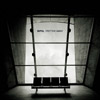
On his second album, Andreas Brinkert (aka Bipol) is clearly working in a modern industrial context, but one that is somewhere between the experimental abrasion of the "true" genre and the more popularized distortion-and-drum-machine set as well. The outcome is one that is caked in the dirt and muck of noise, but has a definite beat and occasional melody slithering through.
Like many people (I'm assuming), my introduction to this deep, dank world of experimental and noise music began with the likes of Skinny Puppy, Front Line Assembly, and other artists that became labeled "industrial" with the passage of time.So, I do feel a twinge of nostalgia when I hear what sounds like a broken 808 clicking alongside the buzzing chaotic noise of "In The Name of the Workers," and the junk metal percussion sounds and almost melodic synths only add to that feeling.The rhythm of "My Challenge" sounds like an '80s synth pop track re-sequenced to a complexity the hardware probably couldn’t have handled 25 years ago, and pulls it under a bed of grimy keyboards and indecipherable voices.The result is a dense, heavy mix of sound that is definitely a lot to take in, but not alienating or overly challenging, just complex.
The air-raid siren melodies and crusty bass drum pulse of "Talk About My Scream" alongside vocals screamed to the point of absurdity do feel more in-line with what the kids these days are doing with their industrial music, but the structural complexity keeps it from being just bland jackhammer noise."Confusion" does the aggro-industrial thing as well, mixing gurgling bass lines, broken voices, and drum beats that sound more like kung fu flick sound effects than anything else.Conversely, "In My Hand"'s rudimentary heavy rhythms and careful use of abstract noise channel the early industrial of Cabaret Voltaire or SPK (before either one went the club-friendly route) to great effect.
While the album never really relents, "It Makes Me Sick" allows for a bit of breathing room, even amongst the metal-tinged percussion and brittle synths.The sparse, but heavy rhythms of "The Menacing Kiss" somehow manage to be both abrasive and ambient:it's a whole bunch of noise, but in such a way that it's not fully dominating the mix.The album's weakest link, in my opinion, is "Contest of Devotion."Beginning strong with obtuse steel drum passages, dramatic synth flourishes, and a bit of glitch texture, the track feels like it never hits its stride, as if it’s ready to break out any time into a great blast of electronic aggression, but it never does.
This definitely is an album that commands full attention, because the amount of shit being thrown out at any given time is occasionally oppressive, but never uncomfortable.While some music can be comfortably be playing whilst reading or writing or conversing, this isn’t one of those discs.Instead, the noise and chaos, but all presented over a complex rhythm and structure, are simply too much to ignore, but is well worth focusing on.
samples:
 
Read More
- Administrator
- Albums and Singles
02 hmmm
03 grrr
04 oh!
05 kastell
06 sediment
07 featurette
08 saas fairy
09 kastell 4
10 kasko
11 homesick
12 tricot
13 locria
14 nonfiction
15 happyend 2
02 ah! (Disc 1)
03 Shhh (Disc 1)
04 Glossy (Disc 1)
05 stop motion (Disc 1)
06 sky (Disc 1)
07 beige (Disc 1)
08 Brahms Mania (Disc 1)
09 cinematic (Disc 1)
10 cry (Disc 1)
11 Cottage (Disc 1)
12 I heart Musik (Disc 1)
13 Salamanca (Disc 1)
14 Dolo (Disc 1)
15 Dricas (Disc 1)
16 Cyprus (Disc 1)
17 vessel (Disc 1)
18 Dynamo (Disc 1)
19 Finis (Disc 1)
20 Emocor (Disc 1)
21 Citybike (Disc 2)
22 Oslo (Disc 2)
23 ij (Disc 2)
24 Rivo (Disc 2)
25 pomp (Disc 2)
26 Blinky (Disc 2)
27 parallax (Disc 2)
28 Koral (Disc 2)
29 kolor (Disc 2)
30 auto matic (Disc 2)
31 Dream Over (Disc 2)
32 pastell (Disc 2)
33 magnify (Disc 2)
34 drift (Disc 2)
35 allover (Disc 2)
36 Derby (Disc 2)
37 Flax (Disc 2)
38 Bergen Best (Disc 2)
39 Matinee (Disc 2)
40 Kukicha (Disc 2)
41 6 AM (Disc 2)
42 Flamingo (Disc 2)
43 Rivo II (Disc 2)
44 Goodbye (Disc 2)
45 Fontan (Disc 2)
46 Co-Echo (Disc 2)
47 stop motion II (Disc 2)
48 vitesse (Disc 2)
49 September (Disc 2)
18 voila (Disc 2)
51 Vegas top (Disc 2)
52 Expo (Disc 2)
53 lonely (Disc 2)
54 Java (Disc 2)
55 klack (Disc 2)
56 Project Evergreen (Disc 2)
57 rainyday (Disc 2)
58 Big City Nights (Disc 2)
59 Rosammie (Disc 2)
60 Gallo (Disc 2)
61 May Tea (Disc 2)
62 chronograph (Disc 2)
63 Jank (Disc 2)
64 breezy (Disc 2)
65 press (Disc 2)
66 form faktor (Disc 2)
67 terminal (Disc 2)
68 Karo (Disc 2)
69 Swiss Summer (Disc 2)
Read More
- Administrator
- Albums and Singles
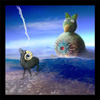 This limited edition collection of live recordings sees irr. app. (ext.) stripped down from its usual group configuration for the stage; for these performances Matthew Waldron braved audiences on his own. The end result is a collection of pieces which allow Waldron to extend the live sound of irr. app. (ext.) into new musical plains. There is less clutter in the arrangements, having one pair of hands forces the music to be sparser than before. Yet the core values at the heart of Waldron’s music are preserved and although his audio surrealism has a new face, it still has the same primal capacity to unnerve and enrapture in equal measure.
This limited edition collection of live recordings sees irr. app. (ext.) stripped down from its usual group configuration for the stage; for these performances Matthew Waldron braved audiences on his own. The end result is a collection of pieces which allow Waldron to extend the live sound of irr. app. (ext.) into new musical plains. There is less clutter in the arrangements, having one pair of hands forces the music to be sparser than before. Yet the core values at the heart of Waldron’s music are preserved and although his audio surrealism has a new face, it still has the same primal capacity to unnerve and enrapture in equal measure.
The music contained on Josephine & Elsewhere is markedly different to the other live recordings of irr. app. (ext.) made available previously on Aspiring to an Empty Gesture. Without a supporting cast, the music follows a more limited scope without sacrificing the ingenuity and enchantment I associate with irr. app. (ext.). "The Four Horsemen of Natural Science (After Aphrodite’s Child)" centres around a stark rhythm and Waldron’s voice, with live processing of samples interspersed as needed.
Throughout the album, Waldron uses a lot of approaches that have been dotted around the irr. app. (ext.) back catalogue but from a different angle in each case. Many of the sounds are kept low in volume and are largely ambient or incidental in character, which gives the music a sinister edge—the clanging metallic guitar and deep drone of "CMBR (Variation 2)" makes for a acutely disconcerting listening experience. However, Waldron does let rip on a couple of tracks; in particular the guitar work on "Haphazard Trajectory II" is superb. Waldron seems to be summoning up the ghost of Snakefinger with his precise but anarchic style of playing. The residue of The Residents is felt elsewhere amongst these solo performances, pieces like "Caniad At Yr Annisgwyl Sbasm" capturing that same free approach to what is acceptable in "serious" music as Meet the Residents.
As an incentive to buy a physical copy of this instead of downloading it off a blog, Waldron includes an original drawing inside each copy. Mine features a strange clump of amoeboid cells emerging from a clam shell which is a strangely fitting image for the equally amoeboid music captured on this Josephine & Elsewhere. As nice as the drawing is, the music of course takes center stage here and although it would not be the best place for a novice to start; those who have been enjoying Waldron’s experiments over the last decade or so will find something unexpected and entrancing amidst these recordings.
samples:
- The Four Horsemen of Natural Science (After Aphrodite's Child)
- Haphazard Trajectory II
- O, Wistfully Cantillating Paraceratherium
 
Read More
- Administrator
- Albums and Singles
 I am a sucker for loud, heavy and white hot rock bands and Mugstar hit home on all three scores. From the opening track to the tinnitus after the CD has stopped playing, I am enthralled by their latest album. Mugstar tear the arse out of my stereo with their pounding performance, every piece on this, their second proper full length, is a mini-masterpiece.
I am a sucker for loud, heavy and white hot rock bands and Mugstar hit home on all three scores. From the opening track to the tinnitus after the CD has stopped playing, I am enthralled by their latest album. Mugstar tear the arse out of my stereo with their pounding performance, every piece on this, their second proper full length, is a mini-masterpiece.
"Technical Knowledge as a Weapon" is one hell of an opener; the combined organ and guitar blitzkrieg has all the power of their former labelmates A Place to Bury Strangers but is less late '80s/early '90s shoegaze and more like a long lost kraut band soundtracking a supernova. What impresses me most is that this is only the opening barrage in a sustained war on quiet as ...Sun, Broken... goes up several gears as it progresses. The sinewy tremolo guitar of "Ouroboros" snakes its way around Steve Ashton’s drums, creating a backbone of iron for the piece. The final section of the piece spirals outwards dangerously and the resulting crash is glorious in its noisy, fiery cataclysm.
After a short, relaxed interlude the opening riff of "Today is the Wrong Shape" launches from the stereo like a missile. Channelling the driving force of Neu! through Joy Division’s "No Love Lost," this is the sort of music that I imagine would pour from my fingers if only I had the talent. Thank Mugstar for making it a reality. As the feedback builds and drums pound incessantly, the piece climaxes with some awesome shouted vocals which give the music all the urgency of a ticking time bomb. The album closes with the epic "Furklausundbo" which again appropriates the motorik beat of Klaus Dinger but supplements it with the kind of organ playing I would expect to hear if I was to reach heaven on a sunny day. When the guitars take over, I do not have to imagine this heaven as it is here and it sounds even better than I imagined.
How these guys have remained under the radar for so long has always baffled me but I would be surprised if this disc did not see them gain the sort of momentum they deserve. ...Sun, Broken... is by far and away one of the best examples of psychedelic rock to pass my way recently.
samples:
 
Read More
- Administrator
- Albums and Singles
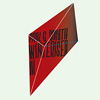 Recorded live last year in Dublin, the performance captured here on Paul G. Smyth’s latest album sees him pare back his piano improvisations to a crystalline and cool minimum. Limiting his runs across the keys has resulted in a rich but focussed exploration of the tonal capabilities of the piano (which despite its abundance in recorded music never fails to be a constant source of creative inspiration). Smyth is always a pleasure to listen to and this disc is no exception, I am kicking myself for not having made it to the concert in the first place.
Recorded live last year in Dublin, the performance captured here on Paul G. Smyth’s latest album sees him pare back his piano improvisations to a crystalline and cool minimum. Limiting his runs across the keys has resulted in a rich but focussed exploration of the tonal capabilities of the piano (which despite its abundance in recorded music never fails to be a constant source of creative inspiration). Smyth is always a pleasure to listen to and this disc is no exception, I am kicking myself for not having made it to the concert in the first place.
Compared to Smyth’s last album—Descenders—Winteriser III is a far more controlled yet intoxicating recording. The first of the two untitled pieces on this new disc initially recalls the quiet and serenity of late Morton Feldman. Smyth gently caresses the music out of the piano, extracting the notes from its body like a magician pulling handkerchiefs from his sleeve. As the piece gains momentum, any relation to Feldman is lost as music patters on the eardrum like a heavy rain shower on a glass roof. The transition away from softness to this turbulence is not jarring; Smyth’s improvisatory style is never heavy handed. Relying not on shock tactics, Smyth blends his attack slowly from almost quiet to a more forceful approach and brings the listener along with him in incremental steps.
On the second piece, Smyth’s playing resembles a startled bird that has accidentally flown into a room and cannot find the window to escape. Out of the piano come fluttering notes, beating against each other like feathers against the air. The piece ends with the hollow sound of Smyth bypassing the keyboard to hit and pluck the inside of the piano directly; the unintentionally captured bird’s tremulous heartbeat thumping its last. The silence after the albums finishes is one filled with the thoughts of what I have just heard as Smyth’s ghostly playing echoes on after the fact.
Smyth’s previous solo albums have all been deep, immersive works (even though some of the recordings are brief). Usually I have to be in the mood for them but enjoy them when I am ready for them. However, with Winteriser III Smyth has made a more accessible version of his piano improvisations yet loses none of his emotional impact. I would in fact argue that this alternative view of his playing has a greater emotional impact than usual. I also have learned an important lesson: next time I will not miss the gig.
samples:
 
Read More
- Administrator
- Albums and Singles
 I couldn’t help but feel a twinge of glorious nostalgia when I heard of this project. Justin Broadrick on guitar, Bill Laswell on bass, and Dr. Israel on vocals immediately brought me back to circa 1996-1998, where nearly every non-noise album I picked up had Laswell involved in some way, and I was pretty heavy into the Wordsound catalog at the time. Also, once I realized there was a distinct drum ‘n bass presence here via Submerged and Enduser, I was hoping for something great, but fearing something too rooted in the past. Luckily, my opinion is the former.
I couldn’t help but feel a twinge of glorious nostalgia when I heard of this project. Justin Broadrick on guitar, Bill Laswell on bass, and Dr. Israel on vocals immediately brought me back to circa 1996-1998, where nearly every non-noise album I picked up had Laswell involved in some way, and I was pretty heavy into the Wordsound catalog at the time. Also, once I realized there was a distinct drum ‘n bass presence here via Submerged and Enduser, I was hoping for something great, but fearing something too rooted in the past. Luckily, my opinion is the former.
Recorded in no less than seven different locations in the UK and US,there is a bit of disparity in the sound, because it is the product of long-distance collaboration.It’s never distracting though, but it does lack the cohesion of a few of Broadrick’s other "super groups", Ice and God.Instead, it is more reminiscent of some of Techno Animal’s best moments, before they became too heavily reliant on running breakbeats through distortion pedals.
Perhaps this is personal bias, but I think Broadrick’s presence is the most individualist here.The guitar tone is unmistakable, and is more reminiscent of the earlier grind influenced Godflesh than the more shoegazy Jesu sound.Tracks like "Blinded" and "Breakaway" have that dirty, feedback-ridden tone that could be from Pure-era Godflesh, easily.However, "Transcendent" and "Repositioned" show the newer, more textural side of his playing that’s in line with the more pop leaning sound of Jesu stuff.
Dr. Israel’s presence is also a definitive one, his vocals alternating from hardcore dancehall toasting to spoken word, to more traditional hip-hop influenced vocalizing, sometimes within the same track."Blinded" alternates between dancehall and almost metal influenced vocals, matching the track’s shift between ragga drum and bass and industrial textures.The aforementioned "Repositioned" sees the good doctor speaking the lyrics more than anything else, and the rhythms taking a more Middle Eastern turn.
The electronics and production courtesy of Submerged and Enduser are definitely worth mentioning as well.Other than Broadrick’s singular guitar sound, the dirty, grimier take on drum and bass definitely brings the 1990s genre into the 21st century.Tracks like "Breakaway" features hyper-speed rhythms that wouldn’t have been out of place on an old Digital Hardcore record, but with far more depth and variety in production, leading out to textural sound collages and raw synths."Wounds Against Wounds" alternates between machine gun snare blasts and slower, more traditional electronica oriented rhythms.
I’m not sure if this is really just a one-off project or something that portends future albums, but I’m hoping it’s the latter.Perhaps it was just the participants that gave me warm memories of tracking down releases on Wordsound and Subharmonic back in high school and feeling giddy whenever word of a new Techno Animal 12" was announced, but it doesn’t just feel like rehashing old ideas.While I do hear parallels in the sound to the likes of early Techno Animal, Ice, and Scorn, never does it sound like anything but a product of the modern era.
samples:
 
Read More
- Administrator
- Albums and Singles
 On their first release, this international trio (hailing from the US, UK and Switzerland) approach the world of electronic improvisation from an organic and synthetic perspective, with home made electronic instruments played live and then resampled in real time, where one artists output becomes another’s raw material. The trio of Django Voris, Moritz Wettstein, and PJ Normal do approach the world of krautrock with a different strategy than most, and the results are both dizzying and compelling.
On their first release, this international trio (hailing from the US, UK and Switzerland) approach the world of electronic improvisation from an organic and synthetic perspective, with home made electronic instruments played live and then resampled in real time, where one artists output becomes another’s raw material. The trio of Django Voris, Moritz Wettstein, and PJ Normal do approach the world of krautrock with a different strategy than most, and the results are both dizzying and compelling.
Opener "Complacency and Wasps" starts up with bits of voice echoing around various software patches, along with a lost techno recording being put through the proverbial ringer.The beats and synths are present, but almost completely unrecognizable, and eventually are brought a bit more out into the opening, only to be shredded and replaced with digitally harvested '70s funk recordings.What resembles a heavily processed bit of scum guitar noise and electronic rhythms also appears amongst the other elements.There’s some music in here somewhere, but it’s not easy to find.
The bitcrushed rhythms and rattles that open "F8 Bit Waves" give a consistent rhythm to the piece that are constant, but have a distinctly brittle and grimy sound, like beats that have been buried for years and, once excavated, must be treated with the utmost care.A fragile analog drum machine and a broken Rhodes organ come in and duet later, but all retains a mechanical, frail quality, with the entire piece sounding like it was being heard through a long metal pipe.The title track uses enough old school drum machine loops and overt synth sounds to channel Kraftwerk, and the rhythms stay rather traditional throughout, even with the laptop skitterings and warmer synth pop elements arising.
The fragmented analog loops and polyrhtyjms of "Paris Gun" push the short track into almost a Latin jazz realm, with a decided lo-fi processed sound at the end.The long, 12+ minute "99% + 1% Space" channels in hollow ambiance and machine gun drum machine swells at first, but the entire piece resembles prog rock inspired ambiance for its initial moments, while the closing bits of heavily processed disco, electro, and pop music, among other genres, sounds more like the death throes of an mp3 player spitting out pieces of files before reaching its demise.The closing "Washed Up On Sure" keeps a steady disco thump throughout, even with a digital glitch sheen over it.The beat stays consistent, but all of the other instrumentation around it is intentionally messy.
It is definitely not an album in the traditional sense, but Murky Circuits is unified by that consistent feel of sound being created and immediately dissected digitally, crafting a style that really requires full attention to be truly appreciated, but with a sound that is compelling enough to warrant focus.
samples:
 
Read More
- Administrator
- Albums and Singles
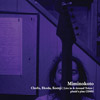 As some part of the Acid Mothers Temple nexus of forward thinking rock musicians in Japan, Junzo Suzuki’s Miminokoto keeps the psychedelic freakout tendencies in check, but the trio isn’t afraid to push their folksy sound into rawer, less conventional territory. Compared to his recent Pieces for Hidden Circles, the full band setting helps to create a more diverse and rich tapestry of sound that bears his mark.
As some part of the Acid Mothers Temple nexus of forward thinking rock musicians in Japan, Junzo Suzuki’s Miminokoto keeps the psychedelic freakout tendencies in check, but the trio isn’t afraid to push their folksy sound into rawer, less conventional territory. Compared to his recent Pieces for Hidden Circles, the full band setting helps to create a more diverse and rich tapestry of sound that bears his mark.
Recorded live at three different locations in Tokyo between late 2008 and early 2009, it sounds far more like a coherent album rather than live recordings in various settings.The opening traditional of "Ame To Yuki" starts mostly as rudimentary rock:basic guitar strums, sparse percussion and vocals, with melodic bass appearing later on.For the most part, it keeps mellow until the ending segments, which turns on the effects and throws a bit of chaos into the mix."That Spiral Orbit" treads similar ground, but with some fuzzy, wah-wah’d bass that turns the funk up some, but not too much.The dynamics shift from relaxed and minimal to tenser, loud moments, but not dramatically so.
"Teiji Romen" sets sail for jazzier territories, focusing on the rhythmic pulse of Takuya Nishimura’s bass and Koji Shimura’s drums, with Suzuki’s guitar acting more as a subtle punctuation, before all three of them launch into some great harsher moments later on.Both "1-3-5" and "Remember" go back into a more conventional rock framework, the former mixing electric guitar playing and rhythms, and even allowing for some jazz-based guitar soloing towards the end.The more somber "Remember" immediately called to mind "Another Day" from the first Cure album as a possible influence, in both its sound and emotions conveyed, later building in complexity from the interplay of instruments.
The closer "A Whirlpool of Light" takes its influence more from Tago Mago era Can than anything else.Opening slow with delicate guitar and tom-tom drum flourishes, it later morphs to a more dramatic sound, with impassioned vocals and clattering percussion leading the charge into rapid fire, but complex and dense rhythmic structures.It is perhaps the most "different" of the tracks here, and I personally think it’s a brilliant closer to a great album.
Sonically this is perhaps one of the most "normal" things I’ve had come across my desk in recent months, but it’s far from boring or overly conventional.Instead, it’s a warm and inviting disc that isn’t an exercise in unnecessary complexity, nor is it overly esoteric, but is just the right vibe of familiar and innovation.
samples:
 
Read More
- Administrator
- Albums and Singles
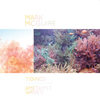 Emeralds' guitarist Mark McGuire tends to record and release new works at a somewhat superhuman and overwhelming pace, most of which are extremely limited and scattered over a number of different labels (making life pretty damn hard for the casual Emeralds fan). Thankfully, however, Weird Forest have stepped in and reissued two of Mark's better hopelessly unavailable tapes, now remastered by the ubiquitous James Plotkin.
Emeralds' guitarist Mark McGuire tends to record and release new works at a somewhat superhuman and overwhelming pace, most of which are extremely limited and scattered over a number of different labels (making life pretty damn hard for the casual Emeralds fan). Thankfully, however, Weird Forest have stepped in and reissued two of Mark's better hopelessly unavailable tapes, now remastered by the ubiquitous James Plotkin.
Tidings (2007) and Amethyst Waves (2008) were both originally released as cassettes on Emeralds’ own Wagon imprint and are composed simply of multi-tracked solo guitar recordings.The opening piece ("A Matter of Time") is the aberration in the bunch, as it does not sound much like a guitar at all, opening with out-of-phase, totally fuzzed-out chords before evolving into a fragile, watery, and wobbly coda that sounds like a heavily processed melodica at times.It is quite striking once it settles down, as McGuire’s looping chorused and delayed web glistens hypnotically as chords swell languorously beneath it.Another unique thing about that song is that it starts with a movie snippet ("When you stepped on the law, Maurice, you stepped on me.")that sounds far more like a harbinger of sludgy, detuned bass and blast beats than bedroom Kosmische psychedelia.McGuire must have an odd sense of humor.
The other piece from Tidings ("Along the Coral Reef") begins with a similar flurry of stuttering, panning blurts of fuzz.Very quickly, however, it morphs into one of the things that McGuire is an undisputed master at: jangling, bell-like harmonics.The Amethyst Waves tracks elaborate further upon that love of intricately constructed thickets of clean notes, and dispense almost entirely with the more heavy-handed effects like distortion and panning.As such, it is a bit less varied than its predecessor, but also significantly better (and more conspicuously virtuousic).While the Tidings pieces slowly morphed from one distinct section to another, the two songs from Amethyst Waves instead hypnotically expand upon a single motif until it becomes such a ridiculously complicated lattice of harmonies and textures that my synapses begin to fry when I try to deconstruct it at all.McGuire’s work doesn’t quite connect with me on an emotional level, but it instead achieves a vibrant and mesmerizing mantric repetition on the final two tracks that leaves me a little bit awestruck.
Unfortunately, there is a slight catch, as the four pieces included are a little bit amorphous and similar sounding.The amorphousness (most noticeable on Tidings) is somewhat easy to understand, given the original format—each track needed to fill one side of a cassette.The sameness issue is a bit thornier though.McGuire is a very imaginative guitarist, but there were clearly some textures he heavily favored during this period.That wouldn’t normally be a problem, but the best and most memorable parts of the last three songs are either built upon strummed harmonics; snowballing, densely harmonized patterns; or both combined.That is an extremely minor grievance though—as far as solo guitar albums go, it truly does not get much better than this.
Samples:
 
 
Read More

